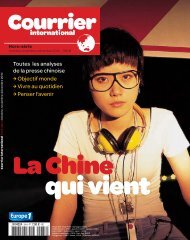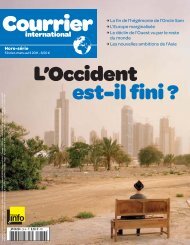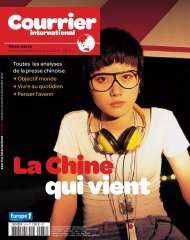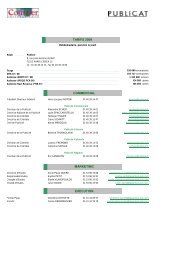2 ОРГАНИЗАЦИЯ И МЕТОДИКА РАБОТ - Courrier international
2 ОРГАНИЗАЦИЯ И МЕТОДИКА РАБОТ - Courrier international
2 ОРГАНИЗАЦИЯ И МЕТОДИКА РАБОТ - Courrier international
You also want an ePaper? Increase the reach of your titles
YUMPU automatically turns print PDFs into web optimized ePapers that Google loves.
This module is designed for the processing of the liberated during the of disposal of<br />
drumsand preparation for shipment of scrap metal is formed as a secondary raw material forsteel<br />
plants. Description of the module and the basic technological processes carried out therein are<br />
given above, in Section 10.1.<br />
11.3.3 Procedures for conservation (liquidation) transformers, condensers and containers<br />
containing sovtol and other PCB-containing liquids.<br />
In the above mobile unit in modular design uses the same technology decontamination<br />
(washing), transformers, condensers and containers as drums [66]. It boils down to the washing<br />
of PCB-containing wastes with the subsequent elimination of this waste by mobile plant hightemperature<br />
oxidation and utilization of transformers, condensers and containers as scrap.<br />
Chemical processing are only liquid wastes with PCB content of about 90% and above. Oleum<br />
sulfonation source of PCB to further neutralize the product does not allow to reach the degree of<br />
conversion of PCB for more than 99%. This results in a product can contain more than 50 ppm<br />
PCB, which requires an additional step (distillation or leaching PCB) from the resulting paste<br />
PHDS-T. This paste can be applied to the archipelago to impregnate the wood from rot.<br />
The initial stage of decontamination technologies (cleaning), transformers, condensers and<br />
containers is in the preliminary washing their "assembly", then they are disassembled and<br />
additional washing of metal parts up to PCB on the surface of less than 50 ppm (mg / kg). Metal<br />
parts with such a low content of residual PCB belong to the European standards for nonhazardous<br />
waste and can be disposed of in any acceptable manner. The rest of the disassembly of<br />
the transformer, wooden and cardboard waste containing more than 50 ppm (mg / kg) of PCB are<br />
burned or to be disposed of in designated landfills in compliance with the stringent requirements<br />
of environmental safety.<br />
Design features of condensers allow them to render a similar technology, as well as transformers.<br />
Neutralization condensers, then throw shells provides washing condensers, their dismantling, a<br />
second wash the shells and the core. After this case, containing less than 50 ppm, sent for<br />
recycling, as crushed core and additionally washed from the PCB, usually a hot solvent. Peeled<br />
and crushed aluminum core contains less than 50 ppm PCB, and also sent for recycling.<br />
With regard to the peculiarities of the elimination sovtol and other PCB-containing liquids in the<br />
territory of the island of Alexandra Island, should use previously mentioned complex<br />
technology. To implement this it is worthwhile to highlight the most important stage.<br />
The first stage of technology should include the identification of waste, based on rapid methods<br />
and their subsequent movement of two to three industrial sites.<br />
In this case, the main goal of the event - the formation identified in the qualitative composition<br />
of the waste according to the degree of danger. Since most of the available drums, transformers<br />
and condensers are in poor condition, should be possible to retrieve the waste in drums or<br />
containers are safe.<br />
The second stage should be directed to carry out the neutralization of the liberated packaging<br />
(including - transformers and condensers), with subsequent compaction and recycling.<br />
Excepted transformers and condensers before compaction to be neutralized. This is a more<br />
complicated process than the neutralization of the drums after removal of PCB-containing<br />
FINAL REPORT for Contract No. CS-NPA-Arctic-13/2009 of December 01, 2009 within the framework of pilot project Development<br />
of Technology of clean up of the area of Decommissioned Sites of The Russian Federation Ministry of Defense in the Arctic by the<br />
Example of Alexanra Island of Franz Josef Land Archipelago from Hazardous Waste<br />
183<br />
183








